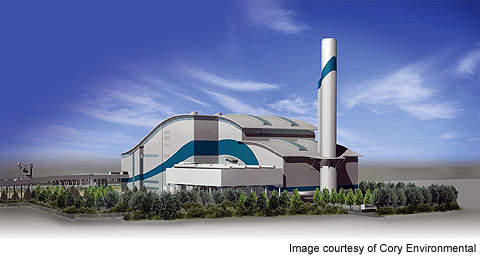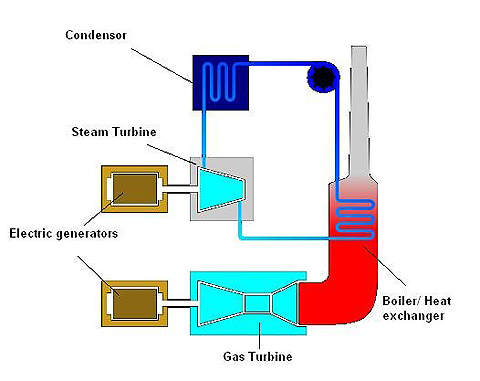The Riverside Resource Recovery facility (RRR) is a UK energy recovery plant constructed at Belvedere in the London Borough of Bexley. The recovery facility is an energy from waste (EfW) plant. Cory Environmental and Riverside Resource Recovery developed the facility together.
The new energy recovery facility began operations in 2011. It was officially opened in May 2012. The plant generates energy that is adequate to power 66,000 homes, by processing 585,000t of residual waste generated in the region.
The project was proposed to develop an alternative to the Cory’s Mucking Landfill site, which was decommissioned in 2010. The facility aims to smooth the transition from landfill to waste treatment.
EfW project history
The proposal for the development of the EfW plant dates back to early 1990s. However, it was cancelled due to technical issues relating to road access and the size of the plant.
Riverside Resource Recovery submitted new proposals to UK Department of Trade and Industry (DTI) in 1999. The new proposals involved the development of a river-served EfW plant with a capacity of more than 50MW. The development process was objected to and prolonged by the London Borough of Bexley, former mayor Ken Livingstone and other groups. DTI called two further public inquiries in 2003 and 2005, respectively.
The construction of the plant was finally permitted by the secretary of state for trade and industry in June 2006.
A judicial review challenge to forbid the approval of the project was posted by the mayor, but the two applications were rejected in February 2007.
Riverside Resource Recovery facility Technology
The Riverside Resource Recovery facility incorporates a waste treatment technology known as incineration. Incineration involves combustion of organic materials and substances to generate heat, which is used to produce power. It also converts waste into bottom ash, flue gases and particulates.
The waste is initially combusted in the combustion units of the power plant. The process is monitored to ensure that minimum combustion temperatures exceed 850°C. High-efficiency boilers are used to recover the heat energy from the flue gases. The heat energy is further converted into electric power through the use of steam turbines. The turbine at the facility is capable of generating 30MW of steam or heat energy and up to 66MW of electricity.
Finance and contracting
The project received £470m funding under a loan facility by the Bank of Ireland, Barclays Capital and Calyon as the joint lead arrangers. In addition, the project an equity finance of approximately £80m was arranged by Cory.
Cory selected Von Roll Inova (VRI) as the engineering, procurement and construction (EPC) partner for the project in February 2007. The technology for the energy recovery plant was provided and installed by VRI, who is also responsible for providing operational and maintenance services to the plant for the first four years.
VRI elected Costain the civil engineering contractor for the project at the end of 2007.
RRR plant details
The facility was developed on 6ha of land on the south bank of the River Thames. The site was formerly used for Borax works (a chemical plant). RRR is capable of processing 585,000t of waste a year. The facility is a river-served recovery plant. The waste processed by the plant is transported by barges and tugs. Cory also commissioned four new Shoalbuster 2208 tugs for the facility.
The waste collected from households and businesses in central London is processed by RRR. The plant also receives waste from four Western Riverside Waste Authority (WRWA) boroughs and the City of London. These arrangements supply about 60% of the waste required by the plant, while the remainder is delivered by London boroughs and other commercial waste contracts.
Construction
Investigation work on the site began in early 2007. It was further followed by archaeological and site remediation work.
Construction work on the project began in early 2008. It involved reconstruction of Norman Road, the highway to the development site. The development of Norman Road was completed in July 2008 and the highway development work was carried out by the contractor Breheny.
The construction of the RRR facility began in 2008, following the completion of Norman Road improvement works. The construction work included piling of the jetty. The steel used in the construction of the facility was supplied by Bourne Construction Engineering under a supply contract awarded in November 2008.
Bourne was also engaged in erecting the steel structures of the facility. The construction of the entire facility was completed in 2011.
Distribution
About 6MW of the total power generated by the EfW plant will go in captive consumption. The remaining power is supplied to the power grid. The power is initially generated at 11kV and further, the voltage is stepped up to 132kV to export power to the power grid.






